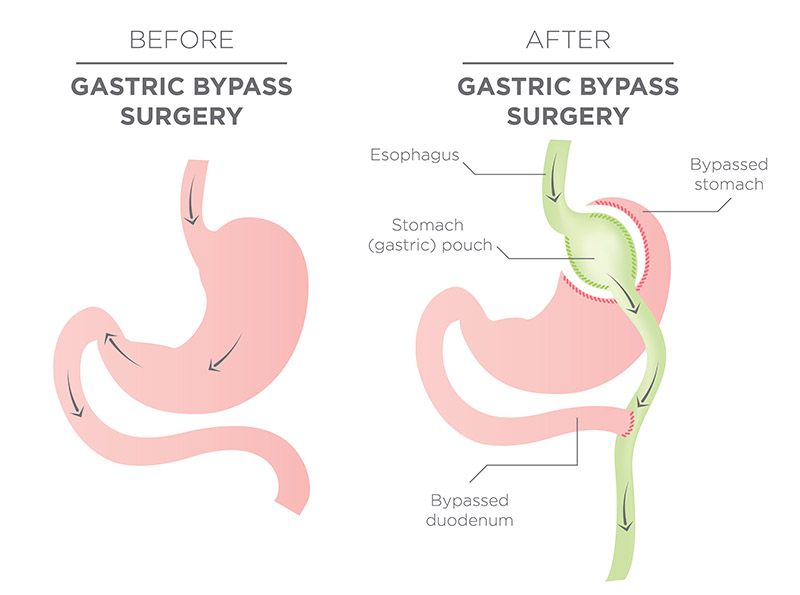
About
Roux-en-Y gastric bypass is the current “gold standard” procedure for weight loss surgery, according to the American Society for Bariatric Surgery and the National Institutes of Health. It is one of the most frequently performed weight loss procedures in the United States.
How Does Roux-en-Y Gastric Bypass Work?
During Roux-en-Y gastric bypass, a surgeon will staple your stomach to create a small stomach pouch, about the size of an egg. This limits the amount of food you can consume at each meal and helps you feel full more quickly. The remaining portion of the stomach is stapled closed, separating it from the active stomach pouch.
The surgeon will then divide your small intestine and connect the middle portion of the intestine to the newly formed stomach pouch. This will allow the stomach pouch to empty directly into the lower portion of the small intestine.
The other end of the stomach is then connected into the side of the intestine known as the Roux limb, creating the "Y" shape that gives the technique its name.
Bypassing part of the intestine limits the amount of calories and nutrients your body is able to absorb.

Advantages of Roux-en-Y Gastric Bypass
Advantages of Roux-en-Y gastric bypass include:
- Rapid, initial weight loss
- Minimally invasive, laparoscopic approach, resulting in less scarring and faster recovery times
- Higher total average weight loss than adjustable gastric banding or sleeve gastrectomy
- Considered the "gold standard" procedure for surgical weight loss
Disadvantages of Roux-en-Y Gastric Bypass
Potential disadvantages of Roux-en-Y gastric bypass are:
- Side effects of stomach cutting and stapling, and intestinal rerouting
- Higher operative risk than adjustable gastric banding or sleeve gastrectomy
- Small risk of nutritional deficiencies
- Non-adjustable and difficult to reverse
Improvements in Health
Many obesity-related conditions improve or even disappear within one to two years after laparoscopic sleeve gastrectomy, including:
- High blood pressure (hypertension)
- Asthma
- Sleep apnea
- Diabetes
Recovery After Roux-en-Y Gastric Bypass
After gastric bypass surgery, you can expect to stay in the hospital for two nights and return to normal activities within two to four weeks.
Weight Loss Results After Roux-en-Y Gastric Bypass
Weight loss after gastric bypass surgery is often significant. On average, patients lose 60 percent of their excess weight within the first six months.
Will Roux-en-Y Gastric Bypass Work for Me?
Our most successful patients are those who follow our weight loss surgery program, keep their post-operative appointments and attend our monthly support group meetings.
Regular follow-up care is crucial to weight loss success after surgery. After recovery, you will need to exercise regularly and modify your diet. Your care team will discuss with you what you need to do to stay healthy.












